These incredible underwater shots were all taken on the shores of the UK
From the Jurassic Coast to the waters of Scotland, here's some amazing ocean imagery from the Marine Conservation Society
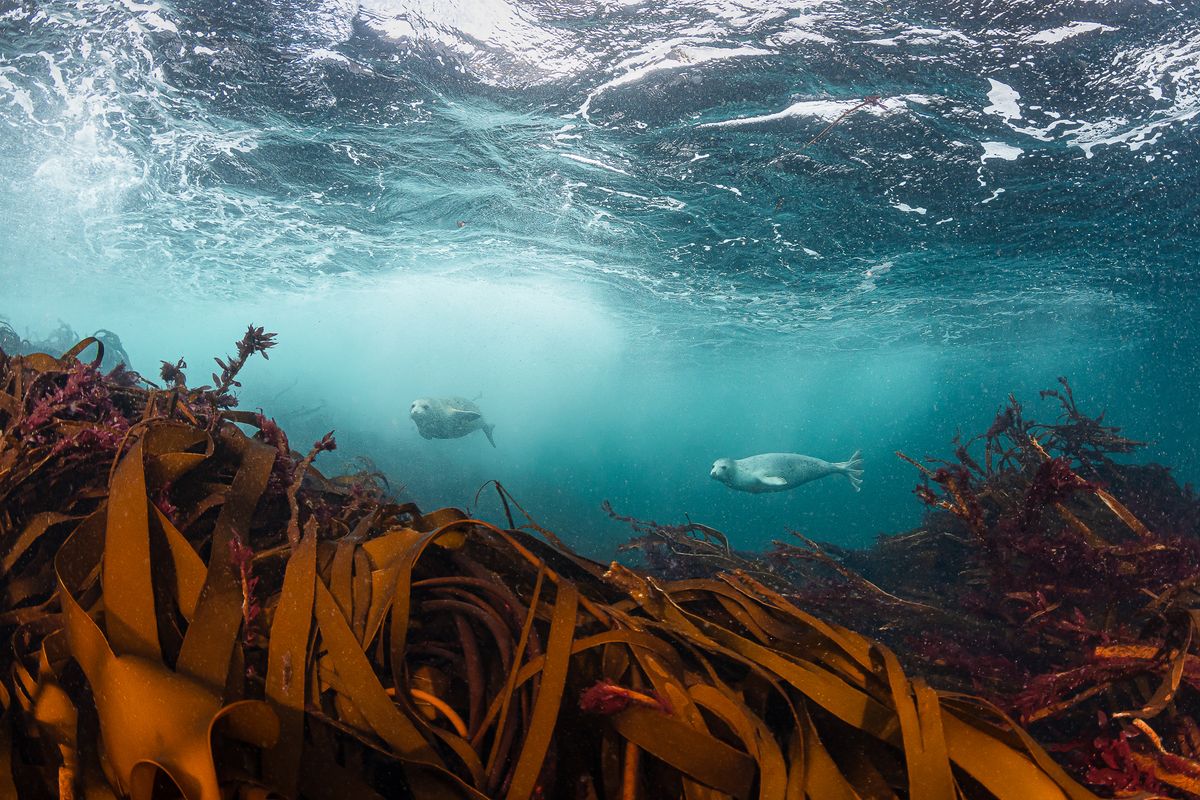
From the Jurassic Coast of Dorset to the northernmost waters of Scotland, there is a huge array of incredible landscapes and animals beneath the water’s surface in the United Kingdom.
The Marine Conservation Society has gathered some of the most amazing ocean imagery capturing the wonders of UK seas by talented photographers and divers around the country.
• Read more: Best waterproof cameras
The Marine Conservation Society’s sightings program asks beachgoers to report animals including jellyfish, turtles and basking sharks when they spot them in UK waters. Divers can join Seasearch, a volunteer diving scheme that monitors underwater life, with the opportunity to hone underwater photography skills.
"The Grey seals on the North coast of Scotland [above] are not as accustomed to divers as in some UK locations, but it was fun to watch them enjoying themselves at a distance," said Kirsty Andrews. "They were far more comfortable in the surging waves than I was, as I clung on to kelp to capture this photo."
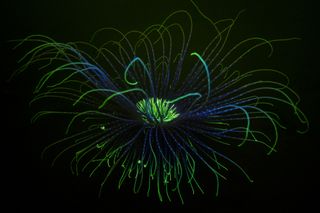
"Over recent years underwater fluorescence photography has become a passion of mine, particularly in British waters," said James Lynott. "I never know quite what I’m going to find that will fluoresce under the blue (near UV) light.
"After spending the day diving at the Garvellachs my buddy and I decided to stop off for an evening dive in Loch Fyne. The site we decided on was at Inveraray slip which is fantastic for fireworks anemones. This particularly large individual was a favorite of mine from this dive as I was able to capture the whole anemone with its long tentacles stretched out within frame."
Get the Digital Camera World Newsletter
The best camera deals, reviews, product advice, and unmissable photography news, direct to your inbox!
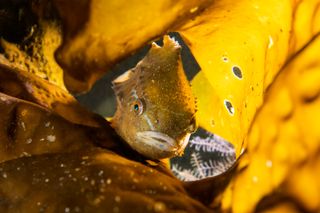
"This young lumpsucker was about the size of a tennis ball and was living attached to the blades of sugar kelp," Alex Mustard told us. "My buddy Kirsty Andrews found this one and I photographed it with one of my flashes backlighting the kelp to reveal its golden color.
"As always with great finds, it was at the end of a long and chilly November dive, so I only had time for a few pictures before I had to bid it goodbye. I like the featherstar arms peeking into the background of this image, which are so characteristic of this area in the far north west of Scotland."
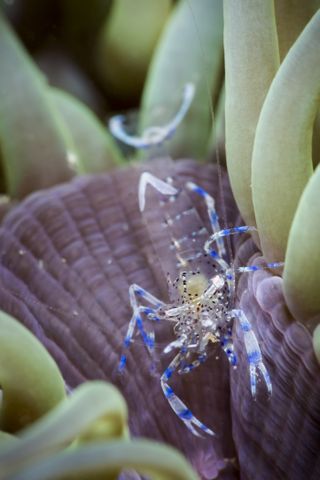
The shrimp is a warm-water species ranging from the Mediterranean to the Azores and, prior to 2007 was found only as far north as the Channel Islands. Since then the shrimp has become well-established along the Dorset coast. It’s a favorite among local Seasearch divers and underwater photographers alike and always a joy to find underwater.
Despite its extravagant color, the shrimp can often be very hard to spot. It lives protected among the stinging tentacles of the snakelocks anemone which also frequents warmer waters. When not lit with a torch or a flash these tiny shrimp can be quite transparent.
Breeding females can often be much larger with more vivid pink and white colors along their bodies. Non-divers might be able to find these shrimp among some of our deeper rockpools – so keep your eyes peeled this summer!
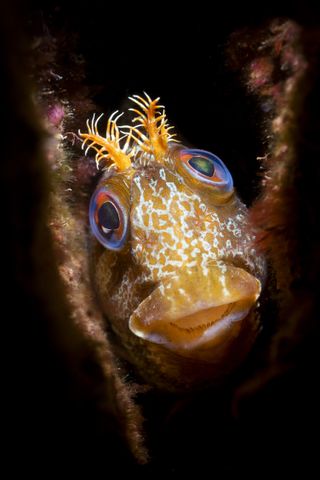
This Tompot Blenny is presenting a smiley face to the camera but he's actually carefully guarding a stash of eggs in the crack behind him. Male tompots can be quite feisty in guarding their territory, which they keep clean and tidy, ready for several females to lay eggs in, if they're lucky. They will fertilize the eggs and guard them for around a month in the early summer.
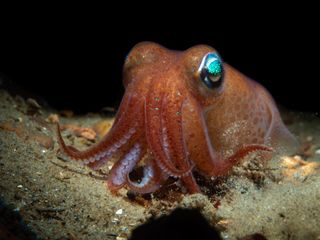
"I was solo diving at a site called A-Frames – which gets its name from the huge sunken concrete blocks which once formed a large pier," said Mark Kirkland "They're a great anchor point for marine life so there's usually something interesting going on.
"It's only an hour’s drive from Glasgow so I dive there regularly. Within minutes of entering the water I found my first one, then my second… and my third. They were everywhere! They're quite comfortable around divers, however will burrow in the sand when they've had enough and that's exactly what this one was starting to do when I snapped this shot."
The Marine Conservation Society (MCS) campaigns for clean seas and beaches, sustainable fisheries, and protection of marine life. Through education, community involvement and collaboration, the MCS raises awareness of the many threats that face our seas and promotes individual, industry and government action to protect the marine environment.
The MCS provides information and guidance on many aspects of marine conservation and produces the Good Fish Guide, as well as involving thousands of volunteers in projects and surveys such as MCS Beachwatch. You can find out more at the Society's official website.
Read more:
Best underwater housings for cameras and phones
Best underwater drones
Best underwater fishing cameras
Alistair is the Features Editor of Digital Camera magazine, and has worked as a professional photographer and video producer.
